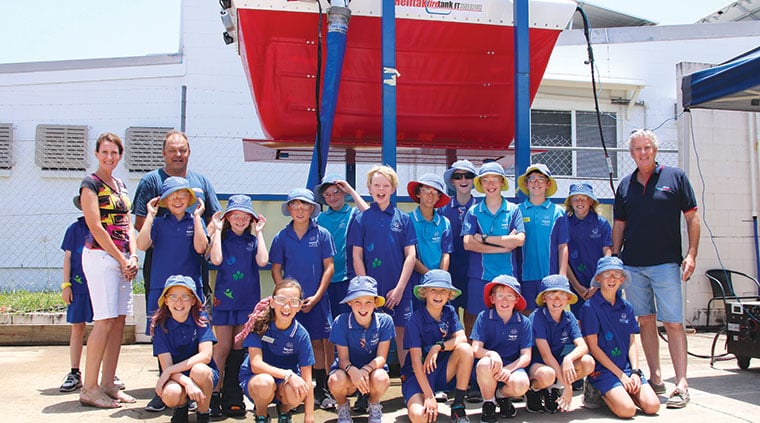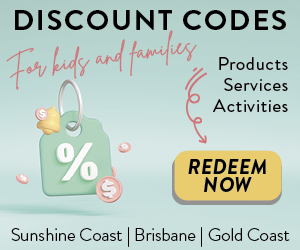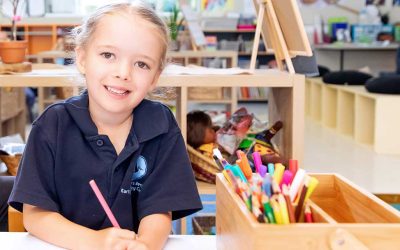Once a sleepy town, the Sunshine Coast is blossoming into a technology haven, with creators and tech start-ups choosing to make this little paradise their home. With such a wealth of talent on the doorstep, one school has ingeniously tapped into that local resource, and with a couple of highly skilled parents and the backing of a hard-working leadership team, their Young Inventors Program is now being recognised as one of the most forward thinking on the Coast.
“We have a unique community partnership in which the skillset and commitment from the parents is amazing,” said Jane Lethlean, Academic Talent Teacher from Sunshine Beach State School. “They have a very strong belief in developing young tech talent locally. It’s about fostering that network for those kids coming through, so anything is possible here on the Coast – you don’t have to go to Brisbane or further afield to pursue your goals.”
The Young Inventors group meets one day every week to undertake projects, excursions and workshops with local creators, regularly utilising facilities such as the innovative Peregian Digital Hub.
“We recently visited Helitak, a local company that has developed a unique water tank that fits on the underbelly of various helicopters without modifications to the aircraft itself,” Jane explained. Students spent an hour with pilot, engineer, inventor and director Jason Schellaars, touring the manufacturing floor, learning about the design process, the use of 3D printing and advanced materials such as carbon fibre.

“It was great to see many of the topics covered in class during the school year being used in real-life products, such as 3D modelling and controlling hardware through software code. With the recent bushfires being so close to our community, this excursion was very timely.”
Fostering failure
A large part of inventing and creating is taking risks. “A lot of kids don’t like to tackle something if they have a fear of getting it wrong,” said Jane. “So, our ethos is to just keep trying – knowing how to look for information and finding the solution for yourself.”
This was evident when the Young Inventors were given the task of building robots for Year 1’s use.
“It took them most of the term to work out the programming – we didn’t spoon-feed them the information, they had to work as a team to solve the problems.”
This mindset of ‘failure is only one step away from success’ flows into the school’s pedagogy—the ‘how’ of teaching.
“Traditionally, many children are in the mindset that they have to learn,” said Ailie-Marie Single, teacher at Sunshine Beach State School. “But, if children know the purpose of why they need to learn something then they are more interested and motivated to do it – you’ll get better engagement, better outcomes academically, and this then flows onto better learning behaviours… so, it makes sense to do things differently.”
The school also ensures that they role model this ‘risk of failure’ to students. “You don’t always know if a project is going to work,” said Ailie-Marie. “But, I think it’s important for the students to see us, as teachers, taking risks and stepping out of our comfort zone; not knowing the answer and having to research together. After all, that’s what we are expecting the children to do!”
Inclusive and integrated education
The Young Inventors Program is just one piece of a much broader all-inclusive technology program being rolled out across the school. By adopting a more child-driven, enquiry-based approach (where teachers pose a question and students find a solution), teachers are now delivering a style of learning that provides better outcomes for all learning levels.
“We really want to provide an inclusive education – catering for all children, whether working above level, at level, or below level,” Ailie-Marie said. “STEM really offers that opportunity for inclusive education because it is collaborative-based learning. You have such a variety of thinkers together solving a problem. When you put those children who aren’t succeeding academically into a STEM situation, where they are problem-solving and working as a team, we often find they are far beyond where you think they are. They may not be able to complete a written task or present a presentation, but they are able to demonstrate their thinking or knowledge in other ways.”
Ensuring the STEM program is available to all students, even during recreation time, the school has used funding to create a MakerSpace, which now offers a variety of lunchtime activities, such as LEGO Masters, Robotics, Chess Club, collaborative building, and more. “Kids that want to come and have a go in their own time can pop in at lunchtime to get involved,” said Ailie-Marie.
The MakerSpace will also be used for more classroom activities next year. The Sunshine Beach Academic Talent program also meets in the space regularly for their extension sessions.
“The MakerSpace is great for our Academic Talent Program as it provides the perfect environment for the teaching team to facilitate and extend those children that are working above level – because you want them to have that ‘Aha!’ moment for themselves,” said Ailie-Marie.
Challenging the teachers
When it comes to technology, the kids are often one step ahead of the grown-ups.
“The students see something new, grab it, and run with it. They will come in the next day, having looked things up on YouTube, and they will explain things to the teachers,” said Ailie-Marie. So, this is a period of huge growth for teachers, as sometimes the kids are teaching us… it’s becoming a really lovely partnership.”
By the end of 2020, technology will be mandated in the Australian Curriculum, which means that from the start of this year every school must teach it, assess it and report on it. But, for many teachers, technology is still a daunting subject and very different to teaching Maths or English – after all, it changes every day; what we know today will be different tomorrow.

To support their teachers through this transition, Sunshine Beach State School runs a professional development program and coaching cycle, in which the teachers become the students – gradually releasing the content and the pedagogy until the teachers are confident in the program. “By the end of the coaching cycle, the teacher has the knowledge and empowerment to teach,” said Ailie-Marie. “They see that it’s really not that difficult and, with these extra steps in professional development, we’ve seen huge growth in the classroom for both the teachers and the students.”
“Teachers also once had the notion that they had to have a robot or device to teach technology,” continued Ailie-Marie. “So, we’ve been doing a lot of unplugged activities – teaching computation thinking, coding, algorithms with pen and paper and movement. It’s not about having the shiniest product, it’s about what to teach and how to teach it.”
Being capable of facilitating inquiry-based learning in the classroom also broadens the opportunities for blending technology into all learning areas.
“We are starting to think smarter about how we deliver the curriculum and planning cross-disciplinary units, explained Ailie-Marie. “Rather than an hour of Science or English, it is now an integrated unit.
“For example, Year 2 students were recently given a BeeBot. They created their own mats – linking maths with spatial awareness and measuring. They then wrote a story to tell the journey and adventures of the BeeBot on that mat. Once completed, they gave the BeeBot and written story to another student and, from that information, that student needed to work out the algorithm to repeat the BeeBot’s journey.”
With these programs in place, the pedagogy at Sunshine Beach State School is no longer about teaching the facts to tick boxes on the curriculum but more about where this will take their learners when they finish Year 6 or Year 12. What skills do they need to be good human beings and to function in society? The school is now teaching students to be producers and creators rather than users and consumers.
“A lot of these 21st-century skills begin in those STEM situations – when you give empowerment to children, and you become the facilitator,” said Ailie-Marie.
“If learners aren’t engaged, you need to think differently about how you deliver education and assess it—as this is how partnerships between the teacher and the student evolve—and that is when the learners truly flourish.”
Related Stories
Innovative loose parts play redefines Prep playtime at Sunshine Beach State School
Glossy black cockatoo finds a new home at Sunshine Beach State School
The unique environment at Sunshine Beach State School





